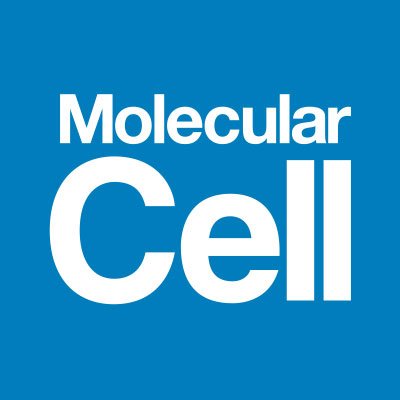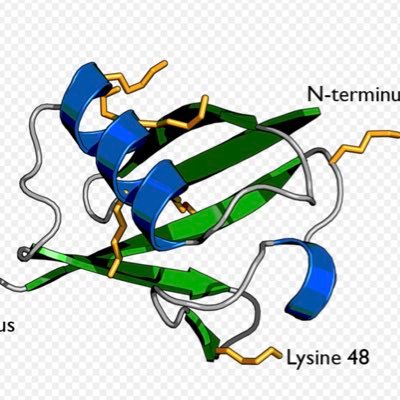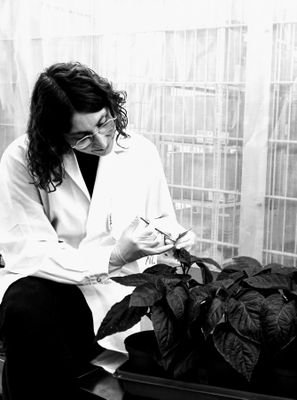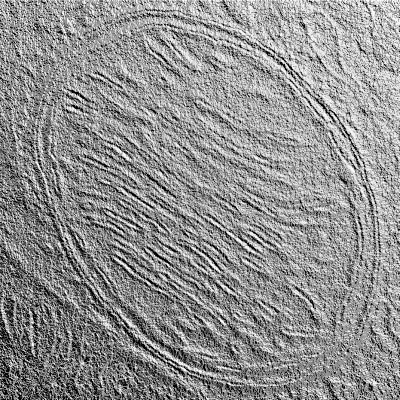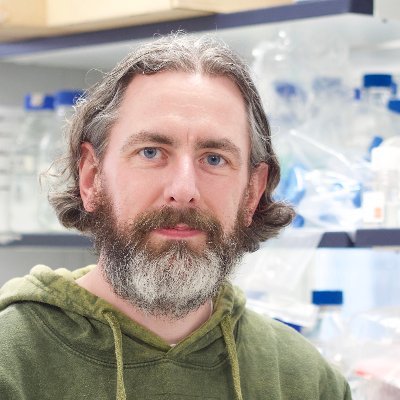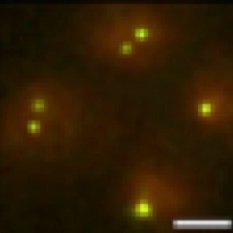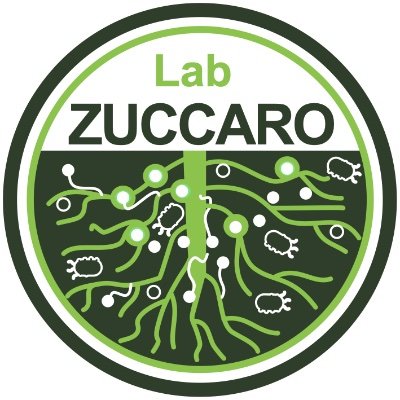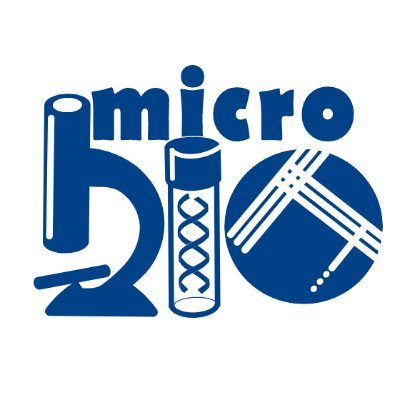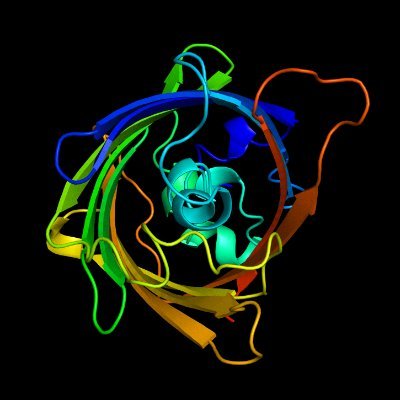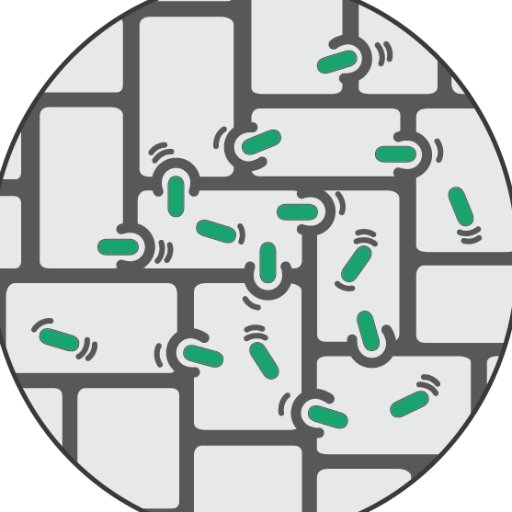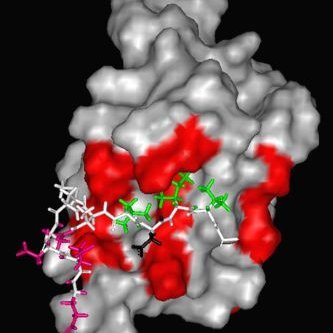
Hofmann_Lab
@LabHofmann
Research group at the University of Cologne
You might like
Our paper on bacterial clippases is now out in @MolecularCell. These really interesting enzymes can make deconjugation of #ubiquitin irreversible. Thanks to @UniCologne and @C2fBiochemistry for support. cell.com/molecular-cell…
Very interesting finding from the Escobar group next door, with some minor contributions from us.
Online Now: Ubiquitin precursor with C-terminal extension promotes proteostasis and longevity dlvr.it/TNFK9q

Measure protein deamidation by bacterial secreted proteins? Check out the recent NMR paper. Congratulations to @Rashmi_Agrata doi.org/10.1002/mrc.70…
New Parkinson’s disease paper: Chimeric deubiquitinase engineering reveals structural basis for specific inhibition of USP30 and a framework for DUB ligandability - published by @MalteGersch group @maxplanckpress in @Nature Struct. & Mol. Biol. nature.com/articles/s4159…
Excited to share that our work on Parkinson's target USP30 has been published in Nature Structural & Molecular Biology! By combining DUB-domains onto USP30, we for the first time achieved crystallization with a small molecule (NK036) without Nanobodies! nature.com/articles/s4159…
Congratulations, great paper! But what makes you think that this is a CARD and not just any death-fold domain? pyrin and DEDs can also activate caspases and invertebrates use all kinds of death-fold domains for that purpose! I don't think this one really should be called CARD.
We previously showed that bacteria encode the pore-forming protein gasdermin and that it defends against phage infection science.org/doi/10.1126/sc… BUT the mechanism by which the gasdermin system defends bacteria against phage remained unknown.
Great paper, but sorry, this is *not* a CARD domain! It is a 6-helix death fold domain for sure, but there in no evidence provided that it belongs to the CARD subfamily. It might have (convergently?) acquired a similar function as mammalian caspase-associated CARDs. Just saying.
Our paper out @Nature: CARD domains mediate anti-phage defense in bacterial gasdermin systems CARDs are essential for caspase recruitment in inflammasome activation. We now find them in bacterial immune systems Congrats @TanaWein! Thanks Kranzusch lab! tinyurl.com/CA88DD

Very excited to share that our manuscript on the "Discovery and mechanism of K63-linkage-directed deubiquitinase activity in USP53" was published today at Nature Chemical Biology @nchembio. Congratulations Kim, Kai, and all authors! nature.com/articles/s4158…

For all ubiquitin, deubiquitinase and chemical biology aficionados: Here's a preprint from the lab introducing 2 new active DUBs in humans & a unique type of DUB activity one would miss with the widely used panels of free ubiquitin chains. t.ly/GnRVv Thread👇(1/10)
New Lammers Lab paper out now in @NatureComms!🥳 We reveal high functional diversity within bacterial deac(et)ylases by systematic functional/structural characterization. This is Leonies PhD project and I’m grateful to have contributed to this great work. nature.com/articles/s4146…
nature.com
Distribution and diversity of classical deacylases in bacteria
Nature Communications - In bacteria Zn2+-dependent deacylases are underexplored. Here, the authors identify bacterial deacylases, providing systemic structure-function analyses to reveal the basis...
Endlessly fascinating and exciting conference with great discussions #EMBOubiquitin24 ! Can’t wait to get back to the lab with some new ideas…



After a long time in the making, our study on bacterial clippases is finally available as a preprint biorxiv.org/content/10.110… These are really fascinating enzymes, for which there will be a ton of applications in studying the #ubiquitin system
Recent reports implicated USP53 mutations in a hereditary liver disorder in children. We got interested in USP53 and its homologue USP54 as phylogenetically they are the most diverse USP DUB family members but according to uniprot are supposed to be catalytically inactive.(2/10)

N4BP1 functions as a dimerization-dependent linear #ubiquitin reader which regulates TNF signalling nature.com/articles/s4142…
Two PhD positions in our research group! If you are interested to study the molecular mechanisms of necroptotic and pyroptotic cell death - and their relationship to plant cell death, do apply!
Do you love #genetics and have a #MSc in #biochemistry, #biology, or #biophysics? 🧬🌱Join @UniCologne in Germany as #research assistant in the @dfg_public-funded network @sfb_1403 on cell death in immunity, inflammation & disease! Apply by 04/02: stellenwerk.de/koeln/jobboers…

By the way: this project was the brainchild of excellent postdoc Thomas Hermanns, who was also corresponding author! We also acknowlegde support from @C2fBiochemistry and @UniCologne
Now published: We analyzed the structure of the Burkholderia effector TssM with and without ubiquitin. TssM is a divergent member of the USP-type deubiquinases and can recognize #ubiquitin despite the lack of the 'fingers' domain. life-science-alliance.org/content/7/2/e2…
Now published: We analyzed the structure of the Burkholderia effector TssM with and without ubiquitin. TssM is a divergent member of the USP-type deubiquinases and can recognize #ubiquitin despite the lack of the 'fingers' domain. life-science-alliance.org/content/7/2/e2…
Congratulations, Tyler & Jonathan, great work!
Excited to share the final product of this work, now available at @MolecularCell. Extremely proud of @tylergfranklin for this and many other achievements during his thesis work! sciencedirect.com/science/articl…
Out now in NatComms: A Chlamydia-like bacterium with a deubiquitinase repertoire similar to Legionella, but using new DUB classes for the same linkage specificities (e.g. M1, K6). #ubiquitin @UniCologne @C2fBiochemistry doi.org/10.1038/s41467…
Our new manuscript on Burkholderia TssM is on bioRxiv. TssM is an interesting bacterial USP-type dubiquitinase effector, which lacks the so-called 'Fingers' Region used by other USPs for #ubiquitin recognition. Our structures show how TssM does the trick biorxiv.org/content/10.110…
United States Trends
- 1. Packers 96.7K posts
- 2. Eagles 125K posts
- 3. Jordan Love 14.9K posts
- 4. #WWERaw 127K posts
- 5. LaFleur 14.1K posts
- 6. $MONTA 1,299 posts
- 7. AJ Brown 6,856 posts
- 8. Jalen 23.8K posts
- 9. Smitty 5,459 posts
- 10. Patullo 12.2K posts
- 11. Sirianni 4,953 posts
- 12. McManus 4,293 posts
- 13. Benítez 8,980 posts
- 14. #GoPackGo 7,854 posts
- 15. Grayson Allen 3,448 posts
- 16. James Harden 1,692 posts
- 17. Cavs 11.2K posts
- 18. #MondayNightFootball 1,929 posts
- 19. Vit Krejci N/A
- 20. Berkeley 53K posts
You might like
Something went wrong.
Something went wrong.




